|
For millennia man has wanted to fly, but has been held back by his innate fear of death by forceful impact. So I’m not sure why we didn’t think of kite surfing years ago. Standing on the beach at Langebaan, one of the best places to kite surf in South Africa, I’m in awe of the serious air time the kite surfers - or are they flyers - get. It’s a blend of sport and art, hip-hop and ballet. “Hi, I’m Shaun,” the friendly guy behind the counter at The Kite Lab greets us with a smile. “Josh is going to really enjoy this,” he says. Josh has long wanted to learn to kitesurf, and has spent endless hours mastering his power kite, enjoying being dragged through the sand and water in the quest for the thrill. The Kite Lab, in Langebaan says it is “South Africa’s number one kitesurfing lessons and gear centre” so they seem the obvious choice for the next step in Joshua’s flying adventure. Soon Josh has his kit, and is headed down to the beach along with his instructor. “I’m George (pronounced in some indecipherable Greek way - which really makes this Greek-styled village feel authentic), I will be teaching Joshua,” he says. “When the conditions are right,” George continues, “we train at Shark Bay.” “Hmm,” I think to myself, “I’m glad the conditions are not right - the name sounds ominous.” Later I find out it’s a name given for harmless sand sharks that come their during certain times to mate. “But today, because the wind is a little bit light,” he says gesticulating towards the wind which seems to be blowing pretty hard as far as a Durbanite is concerned, “today…we will learn here at the main beach.” While Nicky and I relax on the beach, Josh and George begin the first of his two 3-hour lessons, flying a kite. He’s taught how to control it, what the power-zone is, reading the wind, and loads more. He seems to be mastering this, so we wander off to grab a beer at Pearlys overlooking the beach. This is the life! When we return Josh has upgraded. He is now attached to a real kitesurfing kite and is learning to control it on the beach. “Josh will now let the kite pull him in the water, without the board,” George explains. “But he is very safe. I will talk to him with the radio,” he says pointing to a radio that is attached to the head gear Josh is wearing. I’m really impressed by Kite Lab’s training system. Not only does this radio provide a safety system whereby the instructor is always in contact with the student, and there is a rescue boat also on patrol that can be radioed at any time to pick up a wayward student, but it also puts the instructor in the student’s head. What better way to learn, than have your instructor giving you instructions all the time while you’re mastering your manoeuvres . Soon Josh is having serious fun as he’s dragged like some hyperactive seal through the sea. Every now and then he manages to manipulate the kite and he leaps right out of the water, while all the time George runs along the beach issuing instructions. “Tomorrow,” George says, “Josh will use the board.” I can see he’s really excited about that…Josh, that is - and George too! The weather does not play nicely and so “tomorrow” turns out to be the “day after tomorrow”, but soon Josh is back in the water, and this time he has a board strapped to his feet too. “It’s important for him to understand the kite first,” George explains, “and then he can focus on the board.” We watch as Josh begins to master standing. It reminds me a bit of when I learned to ski - it takes time, but as Alan who is the founder of the Kite Lab said earlier when we spoke to him, “once you’ve learned you never forget!” By the end of his second lesson Josh is getting up and beginning to experience the thrill of the ride. Houston, we have a problem. The bug has bitten. It’s like giving cake to a sweet'oholic. Josh has tasted the thrill, the power, the adrenaline of kitesurfing…he hasn’t flown…yet, but he knows he surely can. For now he’ll have to wait, because our time here is up, but he’s already plotting his return. “Josh,” a friend asks him a few days later, “what has been the best thing you’ve done on your year-long holiday adventure?” Without hesitation he answers - “Kitesurfing!”
Comments
The sun’s just rising as it breaks through the dark clouds. I sniff the air sensing danger but I’m not sure what it is. Hearing nothing I turn to to eat the new leaves from a tree next to the gently flowing river. Moments later I look up again. Something is wrong. I sniff the air again. I can hear something. It’s seems far off. What is it? The others in the herd are also looking up now, all staring in the same direction searching for the source of the strange sound. My muscles are tense, ready to propel me away from danger. All of a sudden one of the herd breaks into a gallop and I instinctively respond by leaping off in the same direction. Moments later a thunderous sound rises behind me. My heart is pounding as I strain to outrun the sound. My nostrils flare as I snuffle the air still trying desperately to identify the danger. And then I see it. My eyes roll in horror. I renew my effort to avoid it, but… We drive along a gravel road that looks like we are lost and simply heading off into the Lost World, but all of a sudden a group of buildings appears and with the crunch of our tires on the gravel we park our Pajero. We’ve arrived at the West Coast Fossil Park. Inside the building offers welcome respite from the heat outside. We’ve come here to do a tour of the fossil finds that have been made in this area. As we wait for a guide to do a presentation we look around at the displays describing what they think happened in this area. The eerie frozen posture of a stuffed lassie alongside other stuffed animals gives the place a “Night in the Museum” feel. I wonder if these creatures run riot here when all the tourists have left? Our guide introduces herself and then shows us a brief video of what archaeologists think happened in this area gazillions of years ago. However, while this is interesting, the reason we are here is the promised tour of the fossil dig site. Soon we have left the slightly ageing museum and are following our guide’s bakkie back along a dirt track to the dig site. The trail of four cars comes to a halt in a cloud of dust as we all emerge to cluster around an information sign. Beyond the sign is a valley with several dome covered structures. Our guide explains the history and geology of the land as we look on with expectation of what lies within the covered dig sites. Soon we shuffle down uneven, rudimentary stairs and arrive at a sorting deck. It contains thousands of small stones that are shaken to let the dirt drop through in order to allow archaeologists to search for potential fossils. It looks exhausting, and we are just looking at the pile of it-all-looks-the-same stones not trying to sort it. Entering the covered dig site we find we are walking on a suspended platform and below us a crisscross arrangement of strings has been strung to organise the various sections of the dig. A mass of bones can be seen protruding all over the place. It looks like Night at the Museum gone wrong, with so many bones sticking out of rocks.
“This is a Sivathere,” our guide says pointing at a bone half protruding from what looks like hard mud. “It’s a short necked, long horned giraffe.” I’m not seeing much giraffe, just a few bones that look like they fell off some dude’s braai. “This is a section of the Sivathere’s jaw,” he says pointing with a long stick at one of the bones. Sure enough it does look like a jaw bone, a pretty large one at that. This giraffe-like animal which looks more like an impala on steroids, stands 3 meters in height. It’s a monster giraffe. “Check out how big it is,” Josh says, standing next to a drawing of it. This gives me an appreciation of its size. It’s massive. “There are over 500 Sivatheres entombed in the mud in this area,” our guide continues. “It seems that they were grazing in this area and a flash flood came roaring down the valley drowning them all.” This is amazing as there is no river in sight anymore. Our guide explains that this area was once a forest with a river and the sea was a lot closer than it is today. Looking outside at the dry, dusty area its hard to believe. But there's no doubt there are lots of these Siva things all over the place here. Either something disastrous happened to them or it was a mass suicide or some bushmen had a big Siva Steak party one night! It is truly amazing standing there looking at the scene of obvious destruction with hundreds of animal bones all scattered around. “Each square,” our guide says pointing at one of the hundreds of squares in the excavation, “takes a week to excavate.” I’m not sure I would have the patience for this. This is confirmed a few minutes later. After ending our tour of the dig site we drive back to the admin building where we are led through a sorting center. Our guide holds up a jar with thousands of tiny white sticks in it. “Any idea what these are?” he asks. It seems like a silly question to me. “Tiny white sticks,” I answer knowing I’m going to get the teachers-bright-spark-award. Alas, I’m to be disappointed. “No," he says casting me a disdainful look, "these are the frog tibias,” he replies. "Hang! How did I not guess that," I wonder. “All femurs, tibias, etc. are sorted and kept together, like in this jar here,” he says pointing to another jar with millions more tiny white sticks in it. It’s now that I realise I’ve made the correct career choice. Hey this is fascinating. I loved learning about the Siva-thing and how it may have met it’s untimely end, but wow, I can’t see me dusting off bones for weeks on end to then be rewarded with sorting frog sticks into bottles. I can hardly keep my socks sorted. “I’m just grateful there are people that enjoy this,” I say, as we enjoy a snack in the tea garden at the end of our tour. One of my in-laws friends who accompanied us says, “I’m just grateful they allow fossils to visit fossils”, laughing as he digs into his huge lemon meringue slice. There’s no doubt, this has been a fascinating experience, stepping back in time. What is most amazing is that we walk not just in a place but in a time. Where I now stand others have once stood and others will one day stand. We live for just a moment, we should make the most of our time and not let our legacy be just a frog bone in a jar of history, but a meaningful difference in the lives of those we pass by in our brief journey. I'm attracted by the cries of excitement of the others. It means they have found food. Swooping down from high I see that they are fighting over some food on the beach. As I near the edge of the building a piece of food flies past me towards the ground. I dive down determined to catch it before it reaches the ground. Just before the food hits the ground, and the others with beaks open expectantly can anticipation grab it, I snatch it from the air, rising with a squawk of triumph. “Wow, this feels like like Greece,” Nicky gushes as we walk the narrow cobbled alleyways between the whitewashed buildings towards our accommodation. We are staying at a timeshare at Club Mykonos in Langebaan, and the haphazard tiny streets and white buildings next to a tranquil sea remind us of our time in Greece. Langebaan, situated on the north cost of the Western Cape provides not only an idyllic place to chill, but a perfect spot to explore this fascinating area. “It’s like being in a boat,” Joshua says as he stands on the balcony looking down at the beach. Our unit is built suspended just above the beach with the waves crashing below us. All of a sudden there is a flurry of activity amongst the seagulls on the beach below. Joshua has tossed a scrap of bread down to them. “Watch this,” he says, as he throws a piece of bread down towards the beach. “It won't touch the ground.” He’s right. A seagull comes sweeping from above and snatches the bread in midair, before banking sharply to rise again while the disconsolate seagulls below hurl abuse at it. “Crayfish meneer? Crayfish?” a weathered looking fisherman says holding a live crayfish out towards us. Paternoster, just 45km north of Langebaan is a tiny fishing village that has become a popular tourist destination. Paternoster means "Our Father” and its old whitewashed stone houses that cluster together around the tranquil blue bay make it appear to be a “father” of towns. The beach is a riot of colours and activity caused by the brightly coloured fishing boats that have been pulled up on the sand and the customers huddled around the fresh catches that the fishermen have brought in. A lone yacht is moored in the bay that stretches out from the long white beach to the azure blue sky in the distance. Nestled right next to the beach is a fish market where, in the busy season, the fishermen display their catches. It’s here that the best fish and chips can be bought. Leaning over those waiting to pick up their orders I shout, “Three hake and chips, please.” Through the hatch in the wall I can see a frenzy of activity as an endless procession of freshly fried fish and chips is being produced. There’s nothing that makes fish taste better than sitting on a hard wooden bench, hunched over paper-wrapped fish, surrounded by the sound of seagulls, and the smell of the sea hanging in the air. Leaving Paternoster we drive further north to Velddrift. We arrive early for our sunset cruise, so we sit next to the Berg River and soak up the atmosphere as the boat makes final preparations to leave while the sun starts melting into the horizon bringing with it a welcome coolness to the hot day. “Hello everyone,” the captain says as we all seat ourselves on the boat. “Wil jy he dat ek in Afrikaans praat or would you prefer me to speak in English.” Thankfully there are some visitors from the UK on the boat so I won’t have my limited Afrikaans put to the test. “My name is Tollie,” he continues with a chuckle as those in the know laugh at the meaning of his name. I lean over and ask my father-in-law, who is Afrikaans, why people are laughing, and he says it has something to do with bulls losing their manhood. I ask no more. “I’ve been doing this for years,” Tollie says consoling the foreign visitors aboard, “but I am not old,” he quickly adds with a grin. “In fact I never want to be so old that I have to watch Sevende Laan,” he says referring to a South African sitcom. I nod in agreement - that would be old!
Soon we are cruising along the glassy smooth Berg river which has its source in the Franschhoek mountains, where we departed from a week ago. “This is the area to see birds,” Tollie says, as he points to a group of pelicans sitting on the edge of the water. With that there is a rush to the one side of the boat with cameras whirring. Thankfully the passengers are not super-sized so there is no serious listing of the boat. “Look there,” Tollie says moments later. And there we see a flock of beautiful flamingos. It’s like we have be transferred to South America. They stand gracefully on the edge of the river, in their iconic one-legged pose, surveying us with seeming indifference as we cruise quietly by. Their vibrant pink colours burst into life as the sun casts its final orange and red hues on them. We’ve traveled from the beach paradise of Greece to the tropical waterways of South America, and we have not left South Africa. This country truly is a world all in one! |
Archives
May 2017
Categories
All
|

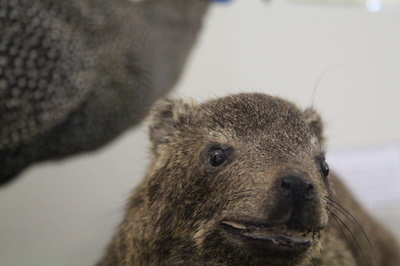
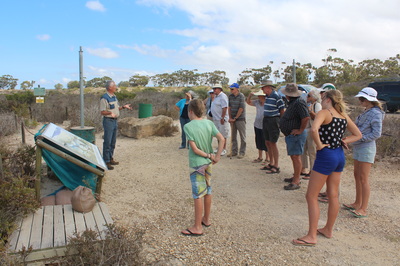
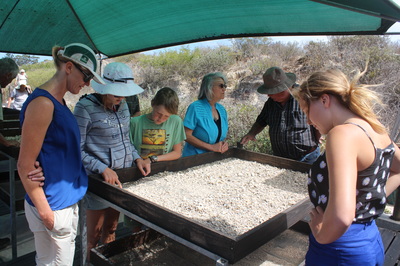

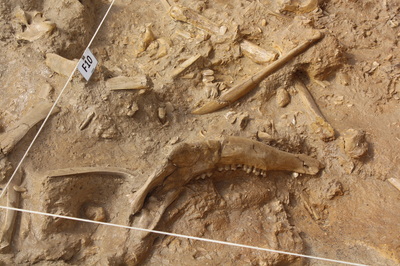
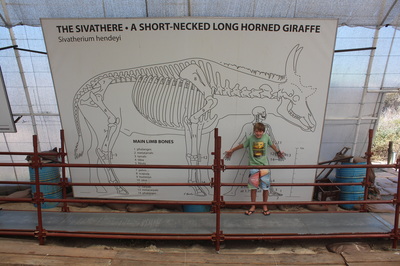
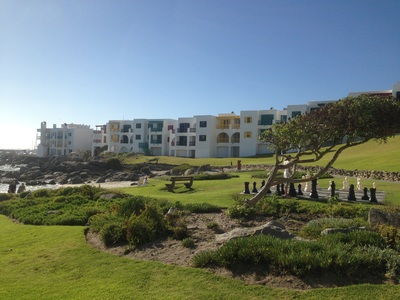
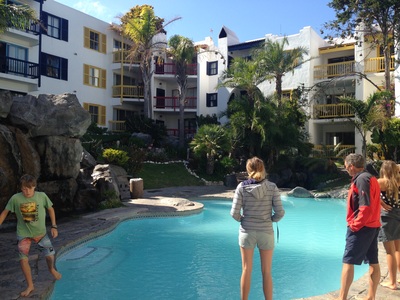
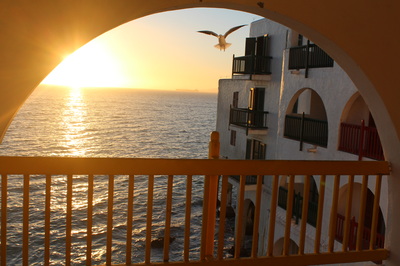
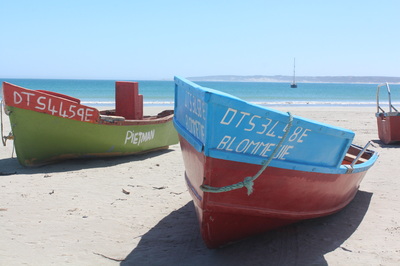
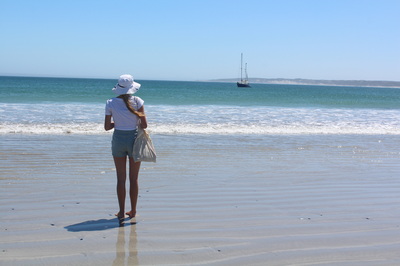
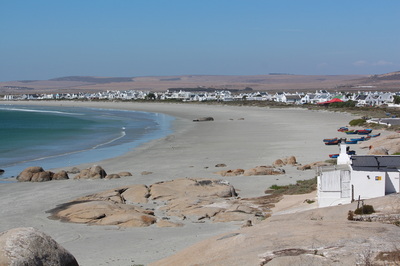
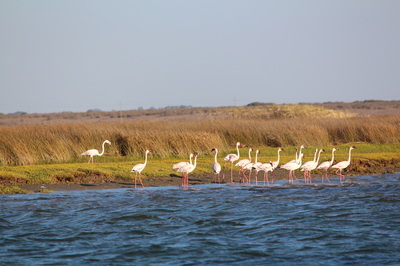
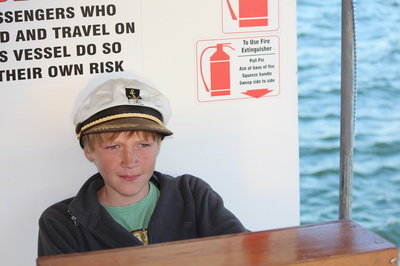
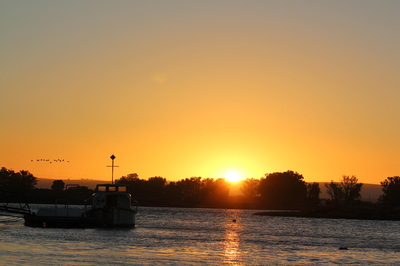
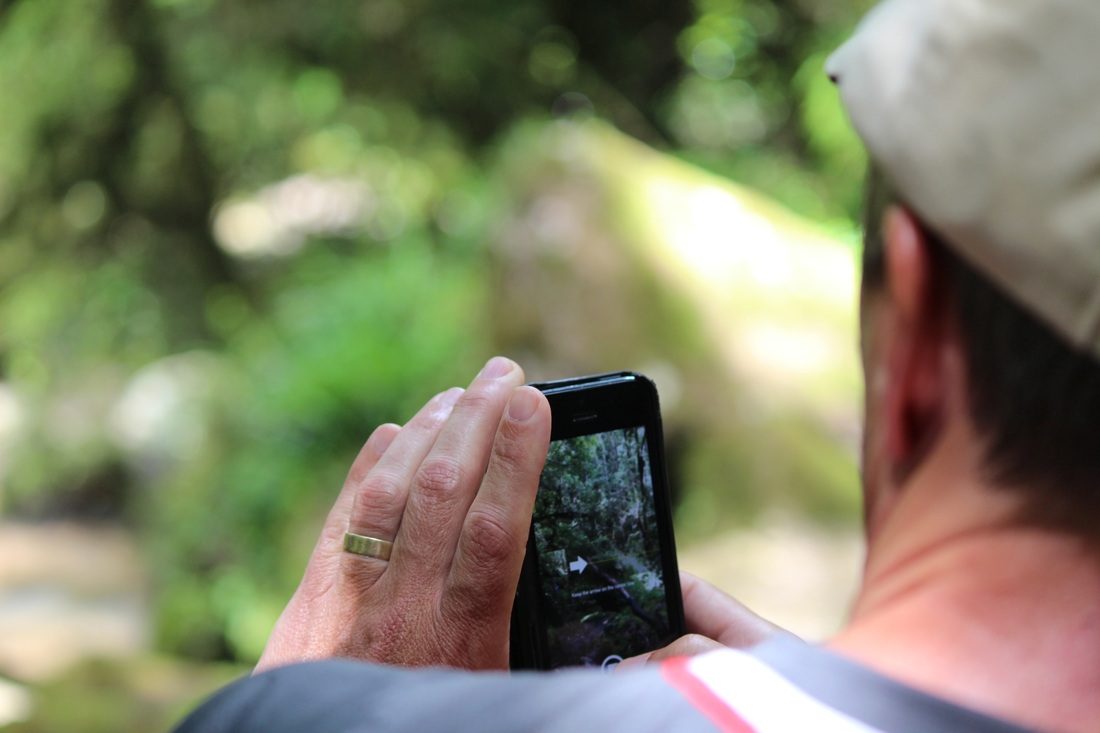
 RSS Feed
RSS Feed
